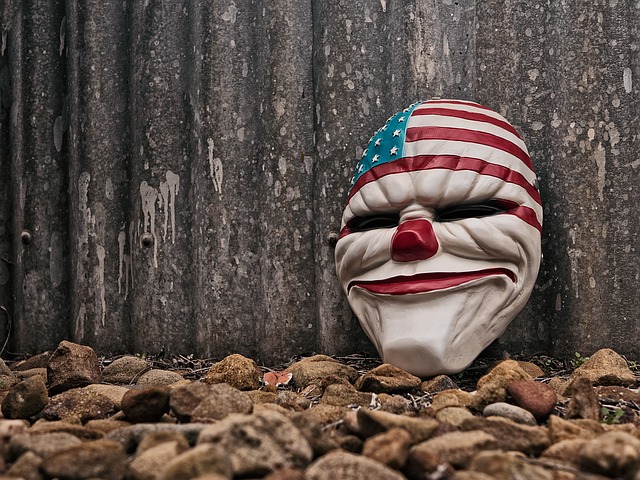
By Roy Cross
Reports of clowns terrorizing citizens across America have been coming in steadily since late August of this year.[1] Whether via social media or local TV news stations, everyone seems to have heard about these horrifying jokers.
While few reports have been substantiated, they have created mass terror in the same way Stephen King’s famed novel It did in 1986. Though simple on their faces, these clown sightings bring up many issues. Police chiefs have gotten creative with their plans to arrest the clowns, whether through basic charges of public nuisance or laws aimed at ousting members of the KKK.[2]
The first reports of creepy clowns surfaced from the Fleetwood Manor apartment complex in Greenville, South Carolina, on Aug. 30, 2016.[1] The reports described two clowns trying to lure a group of about 10 children into the woods near the apartments. Naturally, the children called their parents, who then called the police. Upon their search of the woods and a nearby house, the police found no traces of clowns, clown makeup, or even colorful wigs.[1] Despite the lack of evidence, the Greenville County Sheriff’s Office is taking these reports very seriously, as two more adults called in odd clown sightings.[1]
While Greenville police have taken a perhaps moderate approach to dealing with their clowns, other departments around the country are not “clowning around.” For example, Sheriff J.R. Smith of Cross County, Arkansas, said he will not tolerate having any clowns who are bloody-faced and scary walking around in public. He declared he would charge them with harassment if they intend to scare people with their costumes.[3] Smith said he does not want to discourage people from dressing up for Halloween, but he will not accept people frightening the general public.[3]
This no-tolerance approach has gained criticism from legal scholars, such as University of Arkansas associate law professor Danielle D. Weatherby. The First Amendment protects people’s right to free expression, which includes what they wear.[3]
While this may be true in Arkansas, in many states that dealt with Jim Crow violence and rampant KKK membership, this is not the case. Many states adopted “anti-masking” laws to respond to growing violence and bigotry by the Klan. One such state is Georgia, which banned the wearing of masks, hoods, or devices that conceal the face for the purpose of hiding the wearer’s identity.[2] These laws do allow exceptions for people wearing traditional holiday costumes on the occasion of the holiday; thus, this could be used as a defense for any clowns arrested under this statute.[2]
Additionally, the mass hysteria has caused normal citizens to resort to violence — with armed “clown hunters” going through the woods of Pevely in St. Louis, Missouri, where they believe some clowns came from.[4] The vigilantes found a Facebook post claiming clowns were spotted and decided to “help.”[4] Police are concerned these vigilantes might hurt children who are trick-or-treating.
These various reports, whether true or not, have caught the country’s attention. They have inspired fear, paranoia, and a lot of work for local police departments. Despite the potential danger for everyone involved, these reports have surfaced at an appropriate time of year — where fright, costumes, and scary movies comprise many Americans’ favorite fall pastimes.
Sources
[1] http://abcnews.go.com/US/reports-clowns-lure-kids-woods-south-carolina-prompt/story?id=41741691
[2] Ga. Code Ann. § 16-11-38 (West), https://1.next.westlaw.com/Document/N0F259F80C0D211DA93C79E79AD952E73/View/FullText.html?originationContext=recentFolders&transitionType=FolderItem&contextData=(sc.Default).
[3] Kenneth Heard, Arkansas sheriff puts clowns on notice; won’t tolerate scaring folks, he says, 2016 WLNR 29761667, https://1.next.westlaw.com/Document/Ia7dd7500864611e6ad42d0453f55e770/View/FullText.html?originationContext=recentFolders&transitionType=FolderItem&contextData=(sc.Default).
[4] Kim Bell, As reports trickle in of creepy clown sightings, Pevely police worry about vigilantes, 2016 WLNR 29847634, https://1.next.westlaw.com/Document/I966604b0867611e6bfb29e06eb15096b/View/FullText.html?originationContext=recentFolders&transitionType=FolderItem&contextData=(sc.Default).